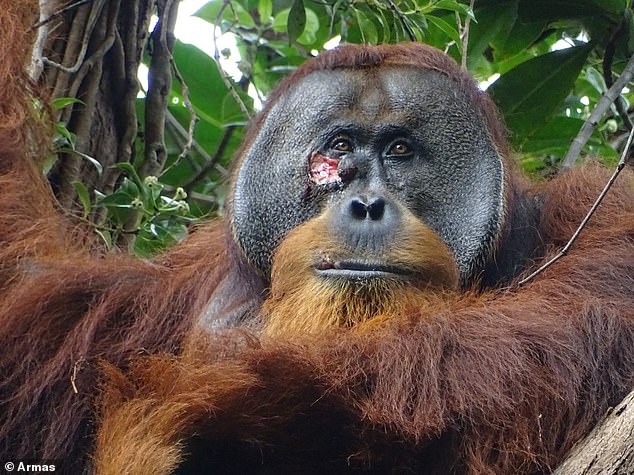For the first time in the world, scientists have observed a wild orangutan applying medicine to its own wound.
A Sumatran orangutan, named Rakus, was seen chewing leaves of a medicinal plant, creating a pulp and administering the substance into a wound near his eye.
Not only were the scientists surprised that the orangutan knew the plant had medicinal powers, but they had never before seen an ape treating its wounds.
After two months, the wound had healed and the orangutan’s face showed few signs of having ever been injured.
Researchers saw a male orangutan named Rakus with a wound on his face on June 22, 2022. Two days later, he chewed leaves and spread the paste on the wound.
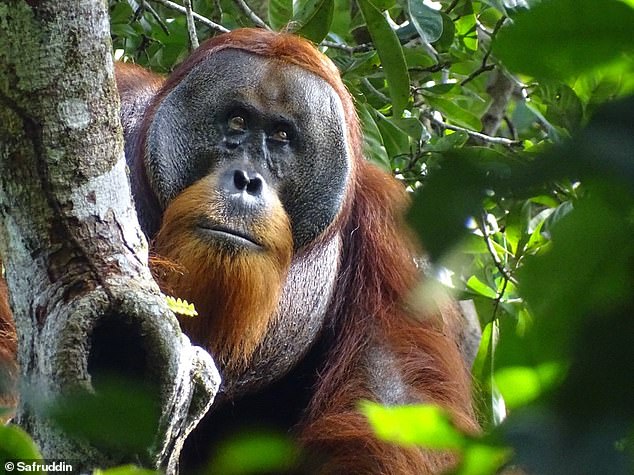
Approximately two months later, on August 25, 2022, Rakus showed almost no signs of having been injured.
The surprising observation was made in Gunung Leuser National Park in southern Aceh, Indonesia, last summer.
Researchers have been studying Rakus since they first saw him in 2009, but on June 22, 2022, they noticed that he had suffered some type of injury to his face.
While it is unknown how the injury occurred, the team noted that male orangutans often suffer these types of injuries in fights with other dominant males.
After the first sighting, the team returned three days later and found Rakus eating leaves of the plant locals call Akar Kuning (scientific name Fibraurea tinctoria).
This was already unusual, since orangutans almost never eat this plant.
People have long used Akar Kuning to treat many ailments, including diabetes, dysentery and malaria.
But they had never seen an ape use it before.
The team watched Rakus chew the leaves for about 13 minutes, then scooped up the pulp with his finger and placed it around his eye until the wound was completely covered.
And for the next half hour, Rakus ate vine leaves.
The next day, he again spent a few minutes eating the leaves.
The researchers observed him several days later to see if an infection developed from the wound, but nothing happened.
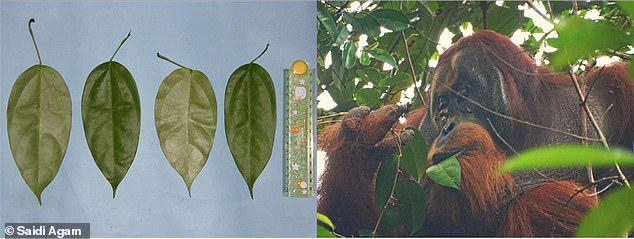
The leaves of Akar Kuning (left), a plant used in Indonesia by people to treat dysentery, diabetes and malaria. The orangutan Rakus (right) eating the leaves.
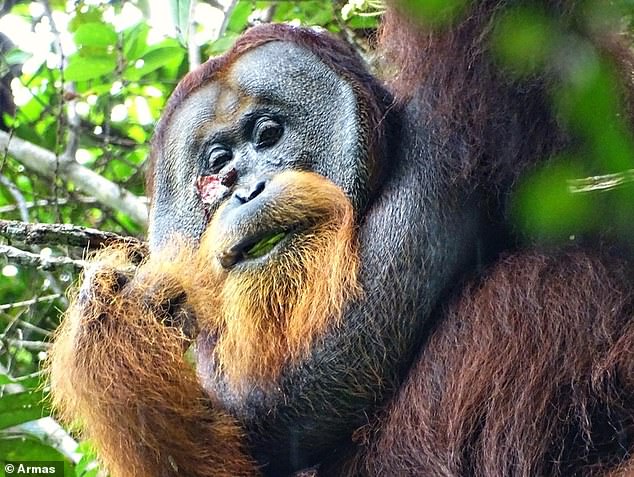
Rakus shows a mouthful of Akar Kuning leaves. You can see the wound on his face, open but not infected.
On June 30, just eight days after the ape treated himself, the wound was closed.
“On July 19, 2022, the wound appeared to have completely healed and only a slight scar remained,” the team wrote in their study published in the journal. Scientific Reports.
The researchers took photographs during the time the wound was healing, but unfortunately they did not capture any photos of him sticking the leaves to his wound.
Scientists have seen orangutans be medicated before, but never in this way.
For example, orangutans with intestinal parasites sometimes eat leaves of medicinal plants known to have antiparasitic properties.
A young orangutan with serious injuries was once seen eating wild ginger, a plant used by local people to treat inflammation and fight infections.
They estimate that Rakus was born in the late 1980s, so he is now around 30 years old.
Male orangutans can live up to 58 years in the wild, but on average their life expectancy is close to 40 years.
“To our knowledge, this study is the first systematic documentation of putative active wound treatment with a biologically active plant substance in great apes and other non-human species,” the study authors wrote in the study published in
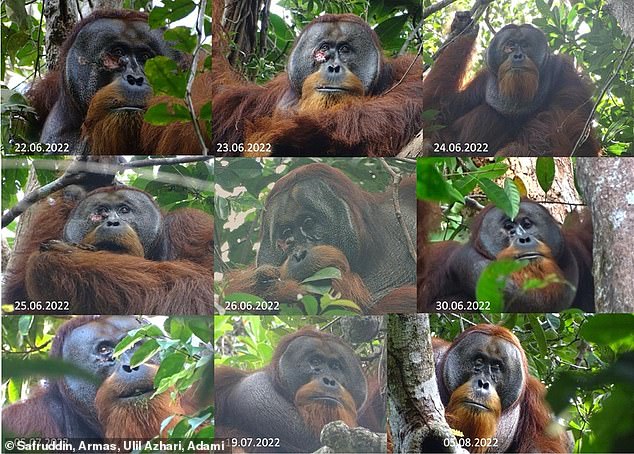
Investigators took photos of Rakus from June 22 (top left), when they first saw the wound, to August 5 (bottom right), when it had healed.
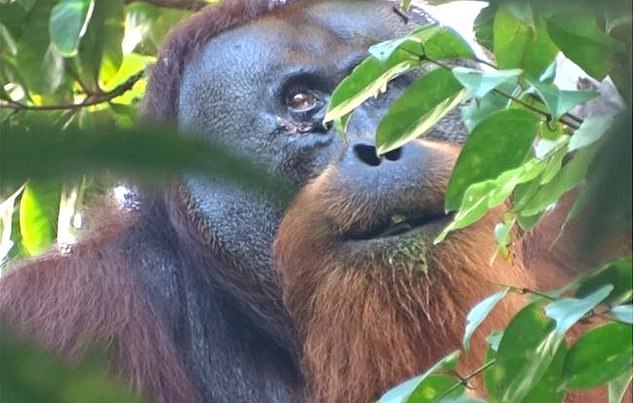
Rakus can be seen here on July 5, 10 days after his wound was treated.
Man has been treating wounds for thousands of years, as far back as 2200 BC.
“Some of the earliest known wound care products used by the Sumerians, Greeks, Mayans, and Egyptians were oil, herbs, maggots, beer, vinegar, wine, green paint containing copper, and honey,” the study authors wrote.
Like any case of an animal apparently self-medicating, this case raises an important question: Did Rakus know what he was doing?
According to the authors of the study, it seems so. The basis for this conclusion is three factors:
He only applied the plant to his wound, not to the rest of his body, and repeated the behavior several times, first with juice and then with pulp.
And thirdly, it took him a considerable amount of time to complete the task.
Perhaps, they concluded, he brought the behavior from his native area.
When male orangutans reach maturity, they go to live somewhere else, abandoning their home territory.
So while researchers have never seen orangutans do this, it’s possible it’s a habit it learned at home.
Going back even further, Rakus may be showing that there is something in our ancestral mind that tells us to rub medicine on our wounds.
“Given that forms of active wound treatment are not only universal for humans, but can also be found in African and Asian great apes, it is possible that there is a common underlying mechanism for the recognition and application of substances with properties medical or functional wounds. and that our last common ancestor already displayed similar forms of ointment behavior,” the authors wrote.


